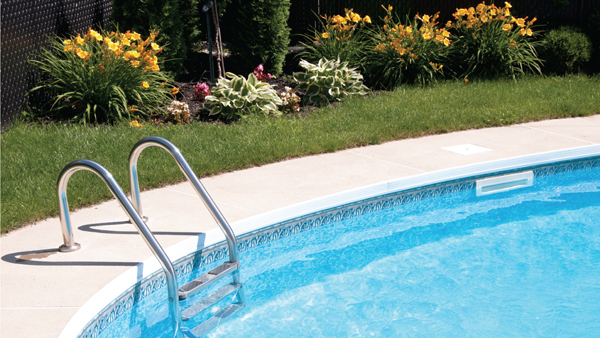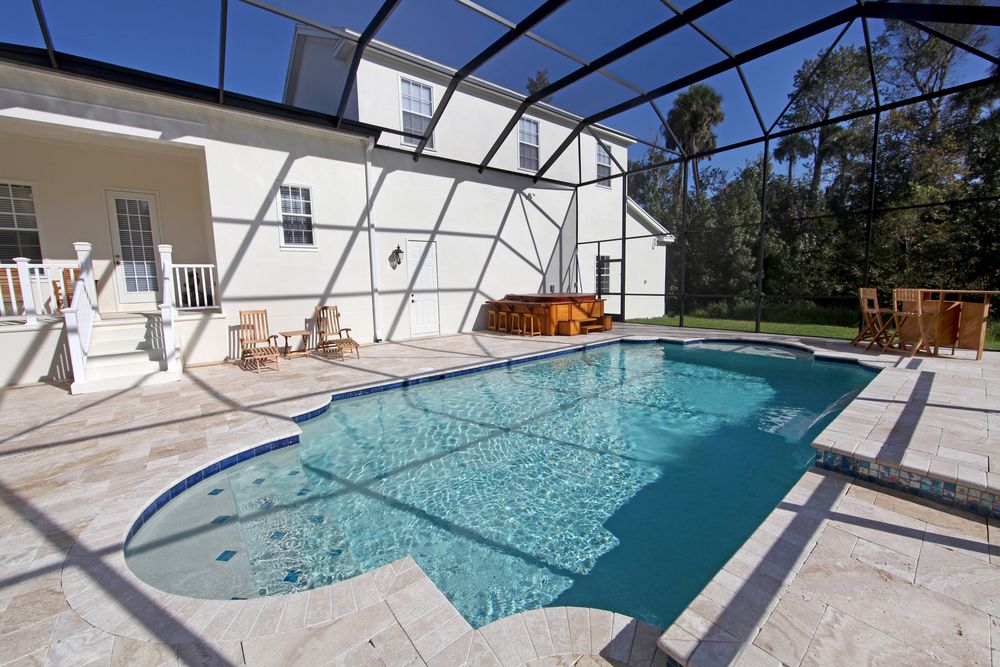Unusual risks of pool ownership
Jul 20, 2016 | By Susan Massmann
 (Photo: iStock)
(Photo: iStock) The yin and yang of summer are a hot, steamy day and the cool, refreshing water of a swimming pool.
Floating languidly at the local swim club or at a friend's house could cause one to desire a pool of his own, but several insurance considerations should come into play before installing an in-ground attractive nuisance.
Property losses
Many of us first think of the liability issues involved with pool ownership, but pools are also subject to some complicated property losses. For example, in Bozek v. Erie Ins. Group, 46 N.E.3d 362 (Ill. App. 2015), the insured's pool heaved out of the ground.
The pool had been emptied to clean debris, and then three and half inches of rain fell. Because the weight of the water in the pool did not exceed the uplift forces of the water pressure in the soil, the pool lifted upward, damaging it beyond repair and taking out the surrounding concrete slab.
The Bozeks had a Homeowners policy with Erie Insurance Group that provided $89,000 in coverage for damage to the pool. However, when the Bozeks presented a claim to the insurer, Erie denied coverage based on the anticoncurrent causation clause in the policy. The insureds alleged that Erie improperly denied coverage. In the Bozeks’ view, the anticoncurrent causation clause dictated that, because a failure of the pressure-relief valve in this instance (a covered event), preceded the increase in hydrostatic pressure (an excluded event), the loss was covered.
Point in time
The court looked to the point in time that the cause contributed to the loss, not the point in time that the cause came into existence. Here, the court did not look at the point in time when the valve failed, it looked at the point in time that the failed valve contributed to the loss, and the failed valve and the hydrostatic pressure contributed concurrently to the loss.
The covered event here did not lead to a separate or different loss. Indeed, without a separate loss, the Bozeks’ interpretation of the anticoncurrent causation clause would lead to an untenable result. The failed pressure valve did not cause any loss until it converged with the excluded event.
Put another way, said the court, prior to the excluded event, there was no loss for which coverage could conceivably vest. Neither the uplifted pool nor the damaged concrete occurred until the hydrostatic pressure acted upon the sides of the pool. The two causes contributed concurrently to this loss and so, the anticoncurrent causation clause plainly precluded coverage.

Debris can create covered hazards for pool owners, but they should check their policy for exceptions. (Photo: iStock)
Tropical storm damage
In a similar case — Liberty Mut. Fire Ins. Co. v. Martinez, 157 So.3d 486 (Fla. App. 2015) — the court found that the ensuing loss exception to the water exclusion did not a apply when a pool lifted out of the ground during a tropical storm, damaging the pool, its deck, a rock garden and a waterfall.
The insureds in this case emptied their in-ground pool because it was overflowing due to tropical storm rains. The subsurface water accumulated under the pool, exerting hydrostatic pressure on the empty pool and lifting it out of the ground. Liberty Mutual denied the claim based on the exclusion for damage caused by water below the surface exerting pressure on a swimming pool.
Unlike the previous case, there was no faulty valve here. The pressure was the cause of loss. The insureds argued that the damage to the other property should be covered under the ensuing loss provision. The court, though, said it was clear that the policy excluded losses caused directly or indirectly by subsurface water pressure, which would include the damage to the other property.
Falling debris hazards
When pools aren't popping out of the ground and causing damage, they may have things falling into them, also causing damage. A few questions we have received from FC&S subscribers involved hazardous materials finding their way into pools.
First up is an insured with an Insurance Services Office (ISO) HO 00 03 04 91 homeowner's policy. The neighbors were having a roof replaced, and during the contractor's removal of the shingles, the asbestos from the shingles migrated into the insured's in-ground swimming pool and caused damage.
Because the pool was an “other” structure, coverage was provided on an open perils basis. The form contained an exclusion for faulty workmanship, repair, and construction of part or all of any property on or off the residence premises. The faulty work did not have to apply to the insured's property — the policy merely said any property, on or off premises. While there was an ensuing loss provision that could provide coverage, asbestos is a pollutant and is not covered unless caused by a coverage C named peril, which was not the case here. Coverage for the asbestos in the pool would be excluded.

Swimming pools are a welcome relief for sweltering summer days, but they also bring their own set of potential losses. (Photo: Shutterstock)
Light-fixture explosion
Another question involved a commercial property loss and provided a different outcome. A mercury-vapor light fixture above a swimming pool in the insured's building exploded, releasing material into the pool that necessitated the draining, cleaning, and testing of the pool at a considerable expense to the insured.
The agent believed that coverage was provided for this loss in its entirety, less the deductible, under the ISO Causes of Loss — Special form, CP 00 10, under its exception to the pollution exclusion. The insurer, on the other hand, argued that the only coverage available for this loss was on the ISO Building and Personal Property Coverage form, CP 00 10, under the additional coverage for pollution clean up and removal, which limits coverage to $10,000.
Physical loss or damage to property?
The first item to consider was whether there was direct physical loss or damage to the property. The mercury polluted the water and necessitated the draining, cleaning, testing, and refilling of the pool. Assuming that more than the water was damaged — that mercury traces had to be removed from the pool itself — then the loss met the policy requirement of direct physical loss to property.
Dispersal or release of pollutants is excluded under the special causes of loss form unless that dispersal or release is itself caused by any of the specified causes of loss. Explosion, which was the cause of loss in this situation, is one of the enumerated specified causes of loss. Therefore, the pollution exclusion did not apply to this loss.
Because in this particular case, the pollution was caused by one of the specified causes of loss (explosion), the damage arising out of that explosion should be covered in full.
The answer may be different, however, if the water in the pool were considered to fall within the category of property not covered. Pool water would not typically be considered as part of this category, but would be viewed as personal property of the insured.
Court interpretation
Should the pool water be considered property not covered, the pollutant cleanup additional coverage would apply since that additional coverage applies to cleanup of land and water. While it may seem a stretch that water in a swimming pool is what the policy drafters intended, “water” is not a defined term so could be subject to court interpretation. If a court were to determine that the pool water fell within the category of property not covered, only the $10,000 of pollutant cleanup coverage would be triggered.
When not popping out of the ground or becoming polluted, swimming pools are a welcome relief for sweltering summer days, but they also bring their own set of potential losses.